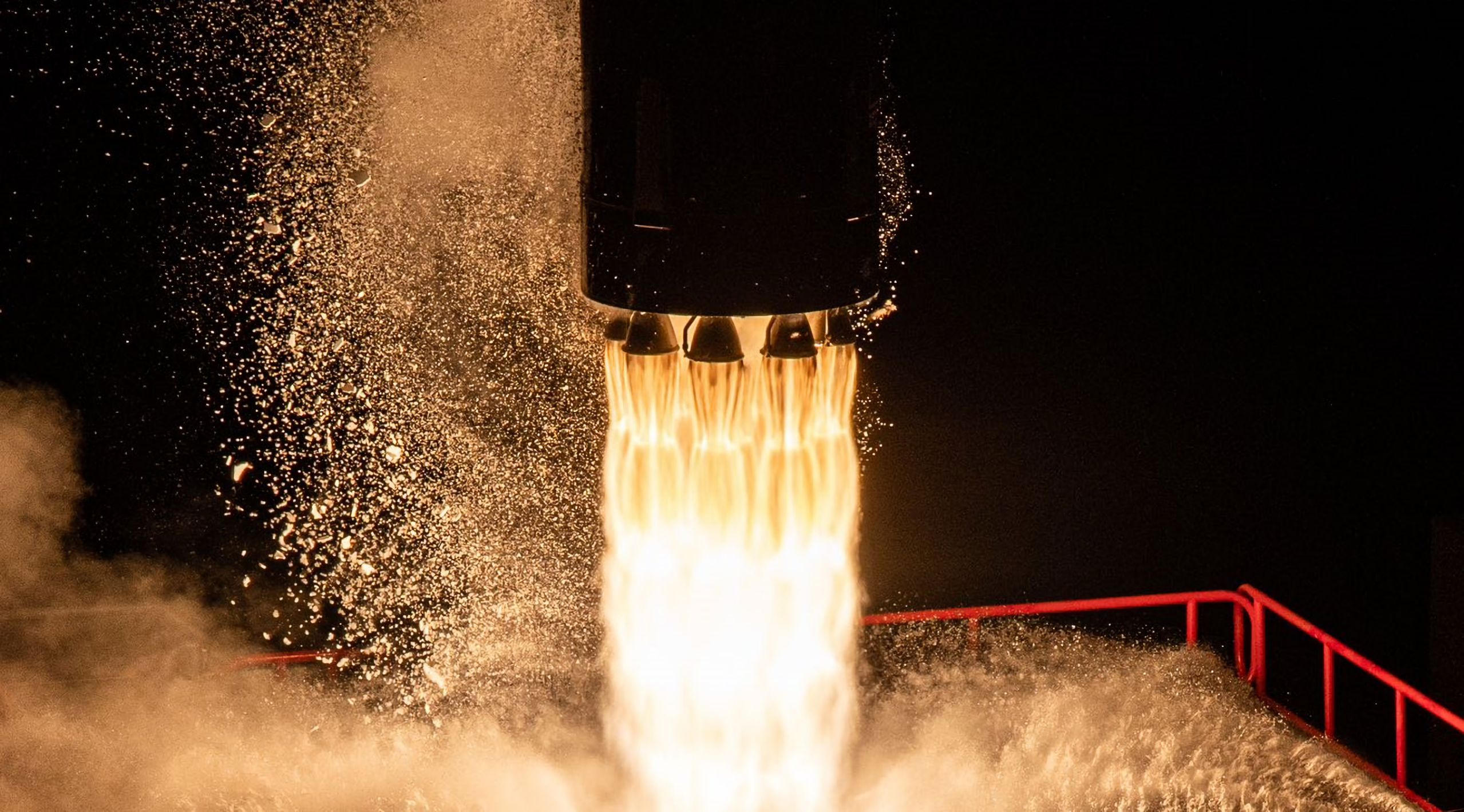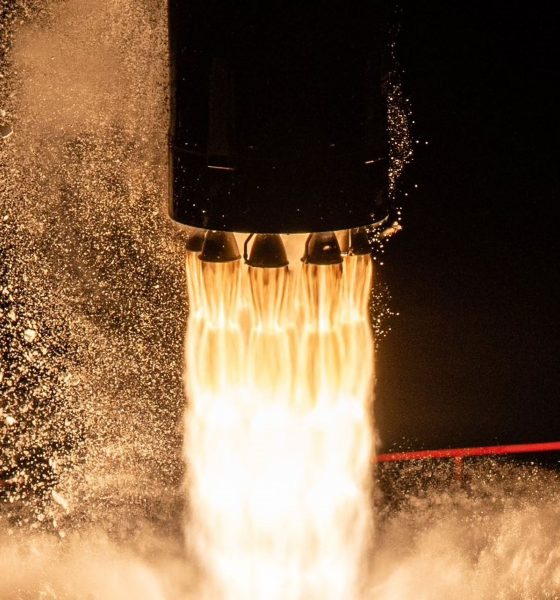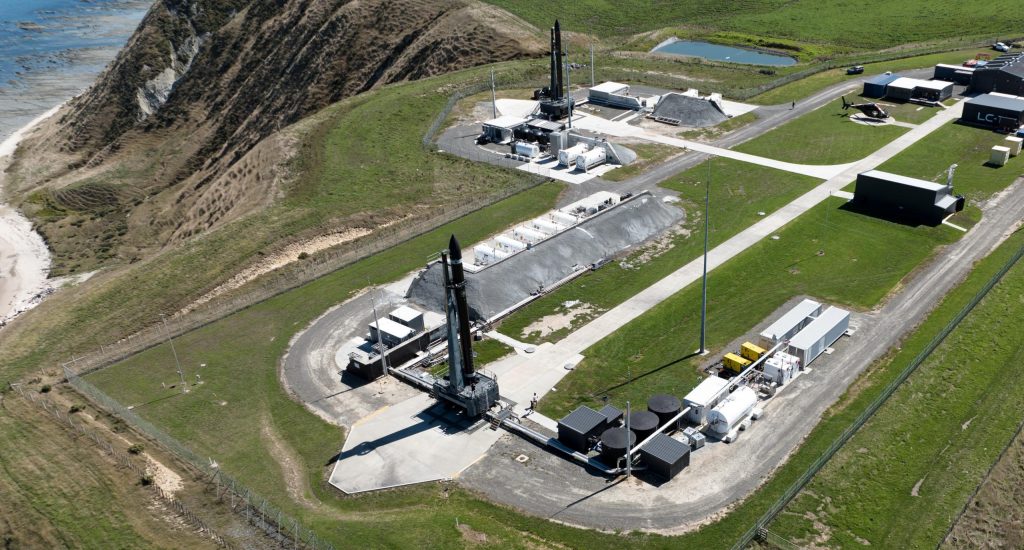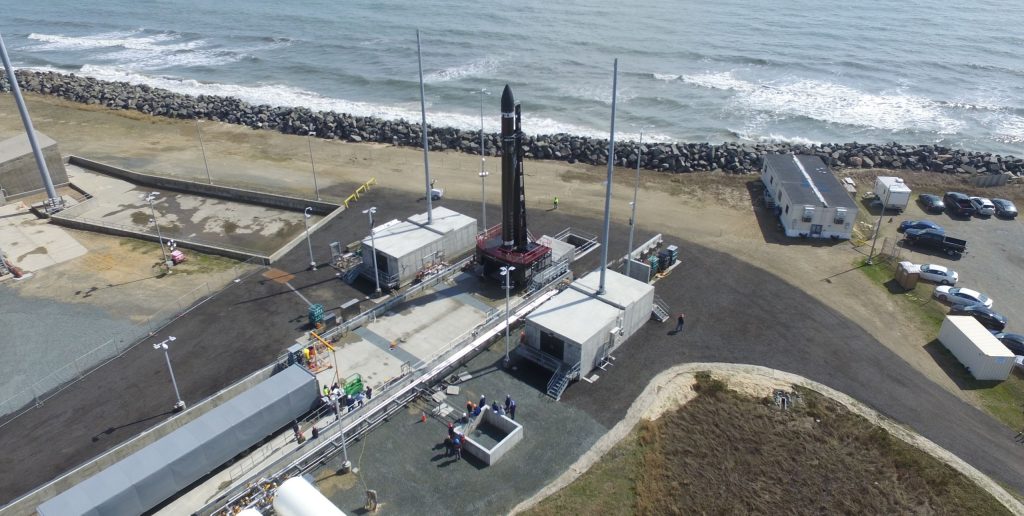

News
Rocket Lab aces first Electron rocket launch from US soil
After many delays, Rocket Lab has successfully launched an Electron rocket from US soil for the first time.
The company’s small Electron rocket lifted off at 6 pm EST (23:00 UTC), January 24th, from a pad built at NASA’s Wallops Flight Facility. About nine minutes later, the Electron upper stage reached low Earth orbit (LEO) and shut down its Rutherford Vacuum engine. 90 minutes after liftoff, the rocket finished deploying three new Hawkeye 360 Earth observation satellites, marking the successful completion of Rocket Lab’s first American launch.
Rocket Lab’s workhorse rocket is relatively unique. Electron is the only rocket in the world to successfully reach orbit with structures built almost entirely out of carbon fiber composites. It’s also the only orbital-class rocket in the world that uses engines with battery-powered pumps. Electron measures 18 meters (59 ft) tall, 1.2 meters (4 ft) wide, and weighs about 13 tons (~28,500 lbs) at liftoff, making it one of the smallest orbital rockets ever. It sells for about $7.5 million and can launch up to 200 kilograms (440 lb) to a sun-synchronous orbit or 300 kilograms (660 lb) to LEO.
The update that's rolling out to the fleet makes full use of the front and rear steering travel to minimize turning circle. In this case a reduction of 1.6 feet just over the air— Wes (@wmorrill3) April 16, 2024
Electron is by far the cheapest widely-available option for a dedicated rocket launch. Although a fully-utilized Electron costs more than $25,000 per kilogram, Rocket Lab has found a decent number of customers that find the benefits worth the cost premium. SpaceX currently offers rideshare launch services for just $5,500 per kilogram. But a dedicated Electron launch buys customers white-glove service and control over the exact timing and target orbit, among other perks.
Many companies are developing orbital transfer vehicles (space tugs) to combine the affordable cost of rideshare launches with customized orbits and deployment timing, but rideshare payloads will always have to grapple with inflexible launch timing. SpaceX will not delay a launch carrying 50-100+ other payloads because one satellite is running behind schedule.
Rocket Lab’s history shows that plenty of companies are willing to pay far more for the convenience of a direct launch. Electron’s first launch from US soil was the rocket’s 30th successful launch and 33rd launch since its May 2017 debut. In 2022, Rocket Lab managed to launch eight times in eight months and nine times overall. Had bad winter weather not conspired to delay its first US launch, the company would have broken into the double digits for the first time and likely kept its monthly launch streak alive.


Sisyphean delays
Rocket Lab’s first American launch is no stranger to delays. The company announced plans to build a US launch site in October 2018. At the time, Rocket Lab hoped to launch its first Electron out of Virginia’s NASA Wallops Flight Facility as early as Q3 2019. For a number of reasons, many of which were outside of Rocket Lab’s control, that didn’t happen.
Rocket Lab began constructing its Launch Complex 2 (LC-2) pad in Virginia in February 2019 and finished construction by the start of 2020. At that point, the then-private company stated that LC-2 was on track to host its first Electron rocket launch as early as Q2 2020. In Q2, Rocket Lab even shipped an Electron to Virginia and completed a range of pad shakedown tests, including a wet dress rehearsal (WDR) and static fire test.
Rocket Lab isn’t entirely free of fault. However, nearly all of the blame for that delay appears to lie with NASA, who required that Rocket Lab use the agency’s own software for a new kind of “flight termination system.” Rocket Lab had already successfully developed and repeatedly flown its own autonomous flight termination system for use at its New Zealand launch site. AFTS replaces a human-in-the-loop with software that monitors a rocket and decides if it needs to protect populated areas by triggering explosive charges that will destroy the vehicle.
NASA’s software was plagued by years of delays, causing the payload assigned to Electron’s US launch debut to change repeatedly. In 2019, it was supposed to be a Space Test Program (STP) mission for the US Air Force. From 2020 to 2021, it was supposed to be NASA’s CAPSTONE mission to the Moon. Both missions were ultimately launched at Rocket Lab’s primary launch site in New Zealand.
Only in January 2023, almost three years after Rocket Lab was first ready to go, did Electron finally lift off from US soil with a trio of Hawkeye 360 radio surveillance satellites in tow. The mission was the first of Electron launches purchased by Hawkeye 360 to launch 15 satellites. Rocket Lab intends to launch again from LC-2 in the near future and has already shipped a second Electron rocket to Virginia.

Elon Musk
Tesla CEO Elon Musk teases insane capabilities of next major FSD update

Tesla CEO Elon Musk teased the insane capabilities of the next major Full Self-Driving update just hours after the company rolled out version 14.2 to owners.
Tesla Full Self-Driving v14.2 had some major improvements from the previous iteration of v14.1.x. We were on v14.1.7, the most advanced configuration of the v14.1 family, before Tesla transitioned us and others to v14.2.
However, Musk has said that the improvements coming in the next major update, which will be v14.3, will be where “the last big piece of the puzzle finally lands.”
14.3 is where the last big piece of the puzzle finally lands
— Elon Musk (@elonmusk) November 21, 2025
There were some major improvements with v14.2, most notably, Tesla seemed to narrow in on the triggers that caused issues with hesitation and brake stabbing in v14.1.x.
One of the most discussed issues with the past rollout was that of brake stabbing, where the vehicle would contemplate proceeding with a route as traffic was coming from other directions.
We experienced it most frequently at intersections, especially four-way stop signs.
Elon Musk hints at when Tesla can fix this FSD complaint with v14
In our review of it yesterday, it was evident that this issue had been resolved, at least to the extent that we had no issues with it in a 62-minute drive, which you can watch here.
Some owners also reported a more relaxed driver monitoring system, which is something Tesla said it was working on as it hopes to allow drivers to text during operation in the coming months. We did not test this, as laws in Pennsylvania prohibit the use of phones at any time due to the new Paul Miller’s Law, which took effect earlier this year.
However, the improvements indicate that Tesla is certainly headed toward a much more sentient FSD experience, so much so that Musk’s language seems to be more indicative of a more relaxed experience in terms of overall supervision from the driver, especially with v14.3.
Musk did not release or discuss a definitive timeline for the release of v14.3, especially as v14.2 just rolled out to Early Access Program (EAP) members yesterday. However, v14.1 rolled out to Tesla owners just a few weeks ago in late 2025. There is the potential that v14.3 could be part of the coming Holiday Update, or potentially in a release of its own before the New Year.
News
Tesla Full Self-Driving v14.2 – Full Review, the Good and the Bad

Tesla rolled out Full Self-Driving version 14.2 yesterday to members of the Early Access Program (EAP). Expectations were high, and Tesla surely delivered.
With the rollout of Tesla FSD v14.2, there were major benchmarks for improvement from the v14.1 suite, which spanned across seven improvements. Our final experience with v14.1 was with v14.1.7, and to be honest, things were good, but it felt like there were a handful of regressions from previous iterations.
While there were improvements in brake stabbing and hesitation, we did experience a few small interventions related to navigation and just overall performance. It was nothing major; there were no critical takeovers that required any major publicity, as they were more or less subjective things that I was not particularly comfortable with. Other drivers might have been more relaxed.
With v14.2 hitting our cars yesterday, there were a handful of things we truly noticed in terms of improvement, most notably the lack of brake stabbing and hesitation, a major complaint with v14.1.x.
However, in a 62-minute drive that was fully recorded, there were a lot of positives, and only one true complaint, which was something we haven’t had issues with in the past.
The Good
Lack of Brake Stabbing and Hesitation
Perhaps the most notable and publicized issue with v14.1.x was the presence of brake stabbing and hesitation. Arriving at intersections was particularly nerve-racking on the previous version simply because of this. At four-way stops, the car would not be assertive enough to take its turn, especially when other vehicles at the same intersection would inch forward or start to move.
This was a major problem.
However, there were no instances of this yesterday on our lengthy drive. It was much more assertive when arriving at these types of scenarios, but was also more patient when FSD knew it was not the car’s turn to proceed.
Can report on v14.2 today there were ZERO instances of break stabbing or hesitation at intersections today
It was a significant improvement from v14.1.x
— TESLARATI (@Teslarati) November 21, 2025
This improvement was the most noticeable throughout the drive, along with fixes in overall smoothness.
Speed Profiles Seem to Be More Reasonable
There were a handful of FSD v14 users who felt as if the loss of a Max Speed setting was a negative. However, these complaints will, in our opinion, begin to subside, especially as things have seemed to be refined quite nicely with v14.2.
Freeway driving is where this is especially noticeable. If it’s traveling too slow, just switch to a faster profile. If it’s too fast, switch to a slower profile. However, the speeds seem to be much more defined with each Speed Profile, which is something that I really find to be a huge advantage. Previously, you could tell the difference in speeds, but not in driving styles. At times, Standard felt a lot like Hurry. Now, you can clearly tell the difference between the two.
It seems as if Tesla made a goal that drivers should be able to tell which Speed Profile is active if it was not shown on the screen. With v14.1.x, this was not necessarily something that could be done. With v14.2, if someone tested me on which Speed Profile was being used, I’m fairly certain I could pick each one.
Better Overall Operation
I felt, at times, especially with v14.1.7, there were some jerky movements. Nothing that was super alarming, but there were times when things just felt a little more finicky than others.
v14.2 feels much smoother overall, with really great decision-making, lane changes that feel second nature, and a great speed of travel. It was a very comfortable ride.
The Bad
Parking
It feels as if there was a slight regression in parking quality, as both times v14.2 pulled into parking spots, I would have felt compelled to adjust manually if I were staying at my destinations. For the sake of testing, at my first destination, I arrived, allowed the car to park, and then left. At the tail-end of testing, I walked inside the store that FSD v14.2 drove me to, so I had to adjust the parking manually.
This was pretty disappointing. Apart from parking at Superchargers, which is always flawless, parking performance is something that needs some attention. The release notes for v14.2. state that parking spot selection and parking quality will improve with future versions.
Any issues with parking on your end? 14.1.7 didn’t have this trouble with parking pic.twitter.com/JPLRO2obUj
— TESLARATI (@Teslarati) November 21, 2025
However, this was truly my only complaint about v14.2.
You can check out our full 62-minute ride-along below:
Elon Musk
SpaceX issues statement on Starship V3 Booster 18 anomaly
The incident unfolded during gas-system pressure testing at the company’s Massey facility in Starbase, Texas.

SpaceX has issued an initial statement about Starship Booster 18’s anomaly early Friday. The incident unfolded during gas-system pressure testing at the company’s Massey facility in Starbase, Texas.
SpaceX’s initial comment
As per SpaceX in a post on its official account on social media platform X, Booster 18 was undergoing gas system pressure tests when the anomaly happened. Despite the nature of the incident, the company emphasized that no propellant was loaded, no engines were installed, and personnel were kept at a safe distance from the booster, resulting in zero injuries.
“Booster 18 suffered an anomaly during gas system pressure testing that we were conducting in advance of structural proof testing. No propellant was on the vehicle, and engines were not yet installed. The teams need time to investigate before we are confident of the cause. No one was injured as we maintain a safe distance for personnel during this type of testing. The site remains clear and we are working plans to safely reenter the site,” SpaceX wrote in its post on X.
Incident and aftermath
Livestream footage from LabPadre showed Booster 18’s lower half crumpling around the liquid oxygen tank area at approximately 4:04 a.m. CT. Subsequent images posted by on-site observers revealed extensive deformation across the booster’s lower structure. Needless to say, spaceflight observers have noted that Booster 18 would likely be a complete loss due to its anomaly.
Booster 18 had rolled out only a day earlier and was one of the first vehicles in the Starship V3 program. The V3 series incorporates structural reinforcements and reliability upgrades intended to prepare Starship for rapid-reuse testing and eventual tower-catch operations. Elon Musk has been optimistic about Starship V3, previously noting on X that the spacecraft might be able to complete initial missions to Mars.








